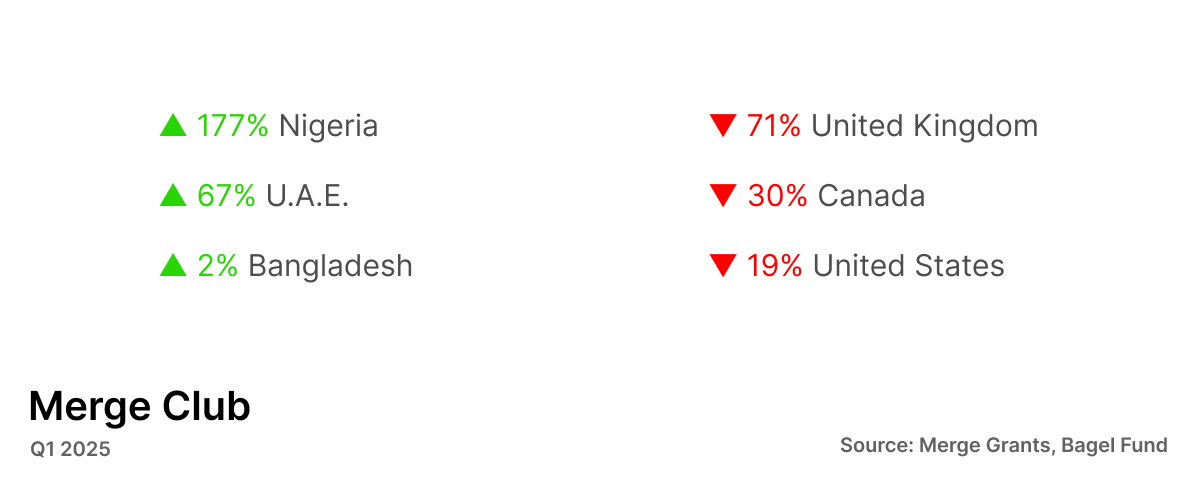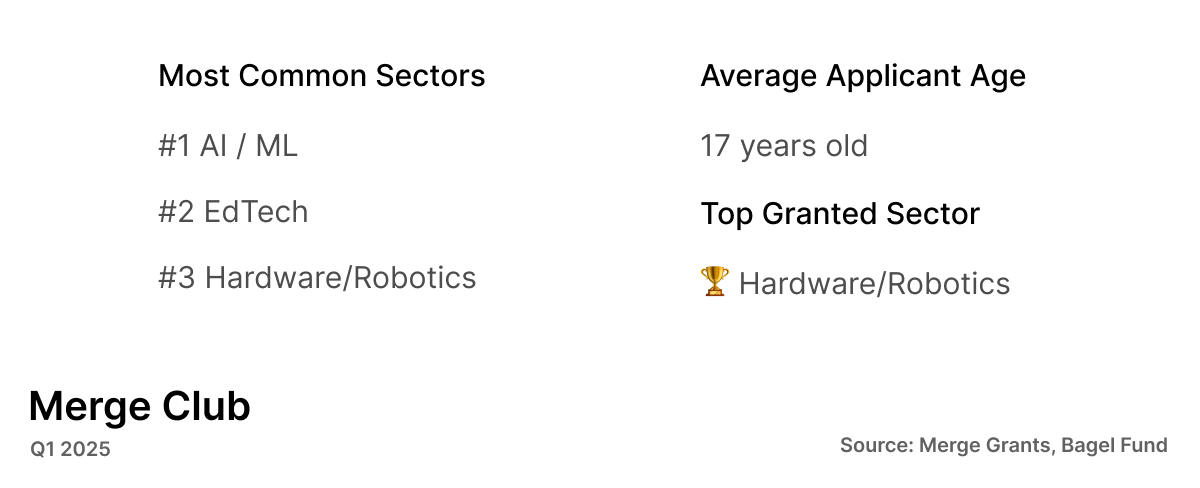When we started Merge, the Microgrant space was barely a space at all. As the costs associated with creating new companies and technologies continue to fall, the barrier to entry has fallen with it. As more and more VC funds and accelerator programs are started, the number of Microgrant programs built for people creating ambitious things has stayed relatively stagnant.
We felt like that was a big mistake, somehow managing to go unnoticed. Starting this quarter, we will publish a State of Microgrants report sharing the growth of our own program as well as the Microgrant space as a whole. The data for this report is sourced from Merge Grants, Bagel Fund, the Microgrant Guide, and Merge’s community of grantees from other non-dilutive programs. If you’d like to contribute your program’s anonymized data to the State of Microgrants, email us.
Microgrants Around The Globe
Despite it feeling like Microgrants were primarily known in the U.S., the majority of people applying to non-dilutive programs are international.
The primary driver of applications for the programs analyzed for this report is word of mouth, so it’s particularly interesting to see where applications came from in Q1 of 2025 compared to Q4 of last year. Emerging markets in Africa, MENA, and Asia have seen the largest increase in Microgrant applicants over the past three months. From university department heads in Nigeria to startup conferences in the U.A.E., Microgrant programs are being pushed more and more to young people building compelling ideas.
Programs Today
Our Microgrant Guide has become the definitive place on the internet to discover and apply to Microgrant and Fellowship Programs. We keep standards high for programs we add to the guide, making sure they’re active, reputable, and 100% no-strings-attached. Currently, we highlight 33 programs that fit these criteria.
This past quarter, we’ve seen 10% growth in programs, a 43% increase in growth rate.
Interestingly, some of the strongest-performing programs this quarter give some of the smallest checks. Programs like Merge Grants, 1517’s Medici Grant, and Bagel Fund (all under $1k) grew significantly on the Microgrant Guide in Q1.
Microgrant recipients
Grantee demographics change from program to program. However, after reviewing data and taking qualitative notes from speaking with thousands of grantees of other programs, we’re able to begin putting together a general picture.
As you can see, Hardware/Robotics wins as the Top Granted Sector by a significant margin. This will obviously change and evolve as we include more and more data from other programs, but this has been a particularly interesting trend we’ve noticed. Read our Q1 Merge Grants update to see more in-depth statistics on our grantees and applicants specifically.
From Emergent Ventures recipients decoding ancient Herculaneum scrolls to Merge Grantees building strength-enhancing mechanized exoskeletons, Microgrant recipients continue to work on some of the most exciting emerging companies and technologies. We look forward to supporting more and more builders in getting access to funds that give them the early belief and funding they need to get started.
If you run a program, please consider contributing anonymized data to better our understanding of the State of Microgrants. Email us if you’d be interested in contributing.
If you’re looking for grants, check out our Microgrant Guide. Find conversations with grant recipients, program reviews, and more on our YouTube.








